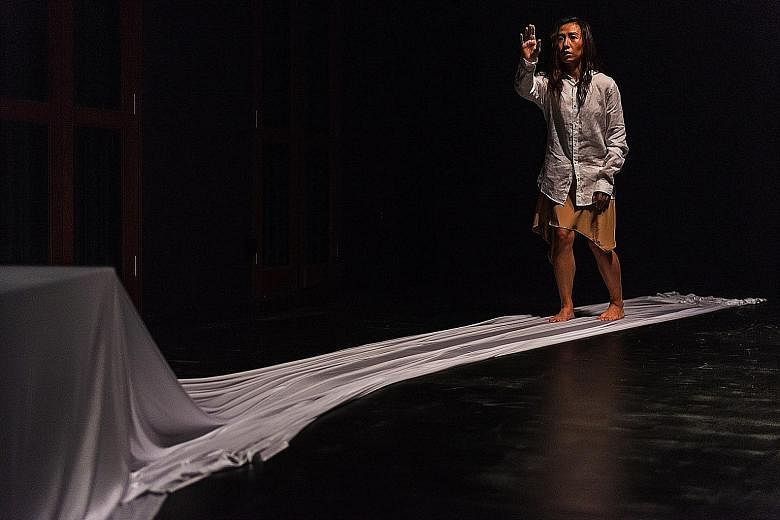REVIEW / THEATRE
FLEET
The Theatre Practice M1 Chinese Theatre Festival
Centre 42, Black Box
Last Saturday
Fleet expresses a grief so heavy that the production sinks under its weight.
This one-woman show about the death of a loved one after prolonged hospitalisation comes from the real-life experiences of actress Melissa Leung Hiu Tuen and Hong Kong playwright Janice Sze Wan Poon.
Both have lost people to cancer: the actress, her husband; the playwright, her younger sister.
The performance is mostly non-verbal, with the occasional voice-over in Mandarin (with English surtitles).
Actions are subtle and minimal on a similarly bare stage. The actress moves slowly, sometimes stiffly, as if encased in the invisible armour of mourning.
Her grief is obvious and also so personal that the audience is exempt from participating in it.
There is a Brechtian distance between viewer and performer as she smooths her hands across a man's white shirt, trying to recapture the flesh it once encased and the scent of the person it belonged to.
In glacial slowness, she unfolds a satin sheet over a rectangular seating block and slowly stretches its length across the room, as if trying to prolong the length of a life.
Apart from the block, the shirt and a glass of water, the Black Box stage is empty. Emptiness is the second performer on this stage, the yawning hole left by death overshadowing the human character.
Viewers have lost the art of appreciating emptiness for prolonged periods, so, less than halfway into the 75-minute performance, one has had enough.
Fleet makes its point about death and mourning, but absent until the end is the appreciation of the cyclical nature of life, expressed by director Liu Xiaoyi in the programme booklet.
Most of the performance forces the viewer to observe a world both shrunk and expanded beyond bearing to a hospital room.
Water dripping from the ceiling, voice-overs and lighting changes present the ups and downs of caring for a dying patient who needs a straw to sip water and finds it hard to get off the bed.
Lighting by Gabriel Chan and multimedia by Ong Kian Peng convey the passage of time through blinking days and shadowed nights. Sound by Darren Ng alternates silence with the distant caws of crows, known throughout Asia as messengers between the worlds of life and death.
Fleet regains power in the last 15 minutes when the actress re-enacts the difficulty of getting a patient off the bed. The contortions change in near-darkness to the patient's dying throes.
It is a relief when the performer gets up and opens a window to the outside, letting external light in.
She has given shape to a grief so large that the mourners are still unable to face its entirety.
Viewers can sympathise, but find that mourning is a journey each mourner must make alone.


